
Station Name: LIVERPOOL GREAT HOWARD STREET[Source:
Tony Graham & Paul Wright]
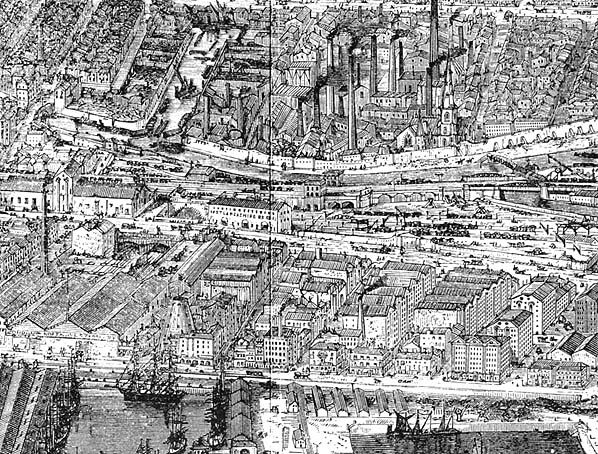 Liverpool Great Howard Street station seen in 1865. The drawing was made from a balloon that was tethered above the River Mersey by the arists Jackson and Sulman. Centre right is the lower yard which had been built on the site of Liverpool Gaol in 1858. To the rear of the lower yard is the line into Tithebarn Street station (Liverpool Exchange) that had opened in May 1850. The 'Grand Arch' can be seen to the left of centre and the passenger station had been to the left of it.
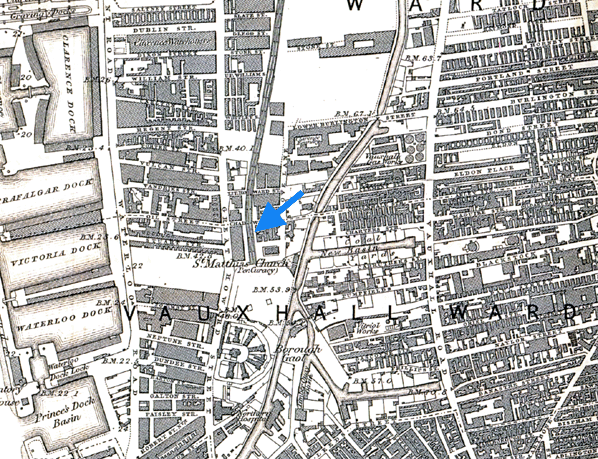 Liverpool Great Howard Street station shown on a 1:10,000 scale map from 1849. The empty land to the south of the station had been bought by the LNWR for thier Waterloo Goods station. The LYR had to build a large brick arch to carry their extension to Tithebarn Street over the Waterloo line. 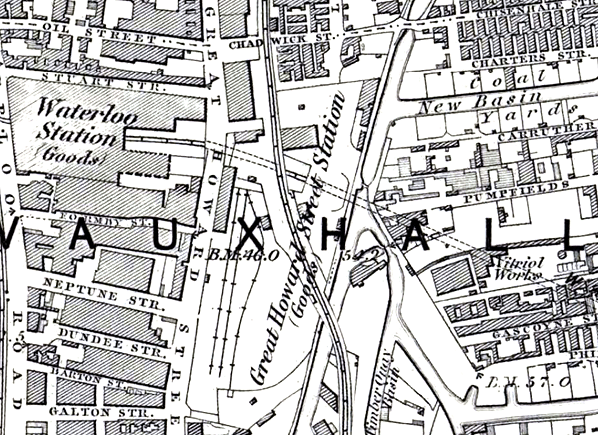
The altered arrangements at Liverpool Great Howard Street shown on a map from 1858 after the Waterloo branch and the Tithebarn Street extensions had opened. Liverpool Gaol had also closed and the LYR had bought the land and extended their goods facilities.
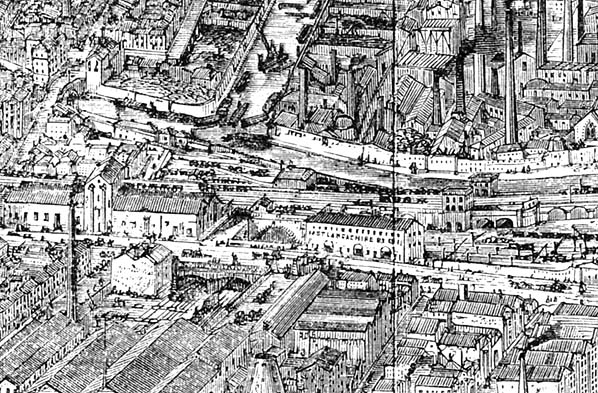 A close up view of Great Howard Street station from the Jackson and Sulman balloon drawing of 1865. In the centre of the view is the 'Grand Arch' the passenger station was to its left. 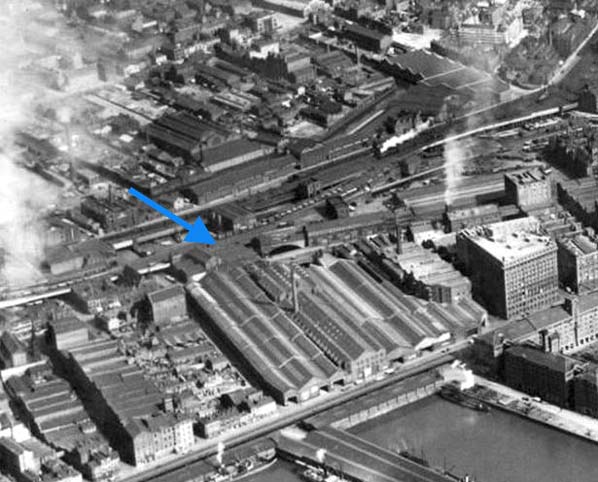 An aerial view of Liverpool Great Howard Street from a different angle to the view above taken a few years later in 1937. the blue arrow marks the location where the passenger station had been. To the right can be seen the John Hawksworth 'Grand Arch' which carried the LYR lines over the LNWR Waterloo branch. Reproduced with the kind permission of Simmons Aerofilms Ltd 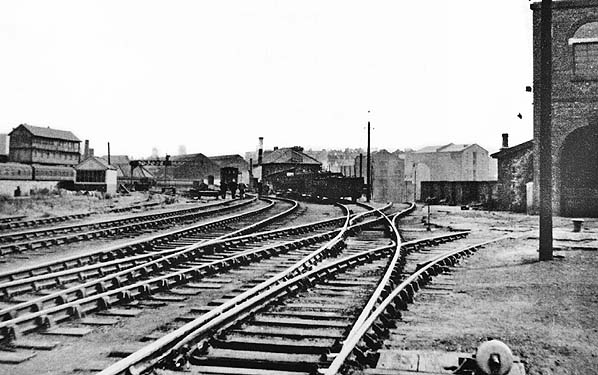 Liverpool Great Howard Street looking south in the late 1940s. The view is taken from the point where the passenger station would have been and is looking across the 'Great Arch'. The building seen to the right housed the wagon hoists that had been built in 1858. The lines curving left had once been part of the route to Tithebarn Street (Liverpool Exchange) station. In the distance to the left can be seen the original Liverpool Exchange number 1 signal box. Liverpool Great Howard Street looking south in the late 1940s. The view is taken from the point where the passenger station would have been and is looking across the 'Great Arch'. The building seen to the right housed the wagon hoists that had been built in 1858. The lines curving left had once been part of the route to Tithebarn Street (Liverpool Exchange) station. In the distance to the left can be seen the original Liverpool Exchange number 1 signal box. old9.jpg) Looking north at Liverpool Great Howard Street from a high building in May 1964. The site of the passenger station can be seen in the top left of the view where a white cabin can be seen with some wagons parked in front of it. The cabin housed a ground frame.
.jpg) A view taken from the Liverpool Exchange No.1 signal box in 1976. The site of Liverpool Great Howard Street passenger station is to the far left. It was located on top of the arches that stretch to the white gate. The lines to the right dated from 1886. At the bottom of the view the cutting which carried the LNWR Waterloo branch can be seen. Photo by John Blinkhorn 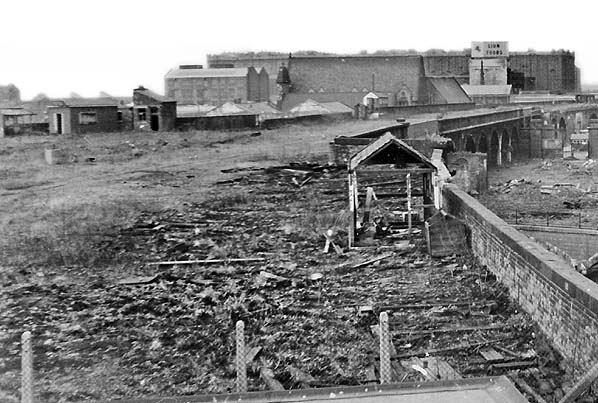 Looking north at the site of Great Howard Street station in 1973 from Liverpool Exchange No.1 signal box. The short-lived passenger station had been located at the point in front of the church where a small white cabin can be seen. Liverpool Exchange Number 1 signal box had opened in 1962 to replace a worn out LYR box. It was built on the track bed of a surviving section of the 1850 Tithebarn Street line. Photo by Bobby Johnson 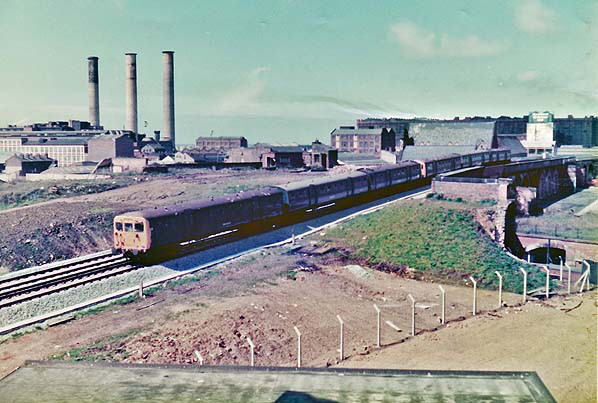 A test train is seen on the Merseyrail Link Line on 19 April 1977. The train was formed of two Class 502 3-car EMUs of 1940 vintage. The rear three coaches are at the point where the passenger station had been. At this time the Link Line was not connected to the former LYR lines at Liverpool Exchange Junction. The connection was made only after Liverpool Exchange station had closed on 30 April 1977. Photo by Tony Graham .jpg) Looking north-west at the site of the Liverpool Great Howard Street passenger station from ground level on 30 March 2015. The station was to the right of the ladders that can be seen in the adjacent yard. The tunnel leading under the line appears to have been designed for pedestrians. Inside it there is a set of stairs that lead to a bricked up passageway. This could have been an entrance to the station. Looking north-west at the site of the Liverpool Great Howard Street passenger station from ground level on 30 March 2015. The station was to the right of the ladders that can be seen in the adjacent yard. The tunnel leading under the line appears to have been designed for pedestrians. Inside it there is a set of stairs that lead to a bricked up passageway. This could have been an entrance to the station.Photo by Paul Wright Click here to see photos from the period 1913 to 1976 Click here to see photos from the period 1977 to 2015 Click here to see photos of the Grand Arch
|
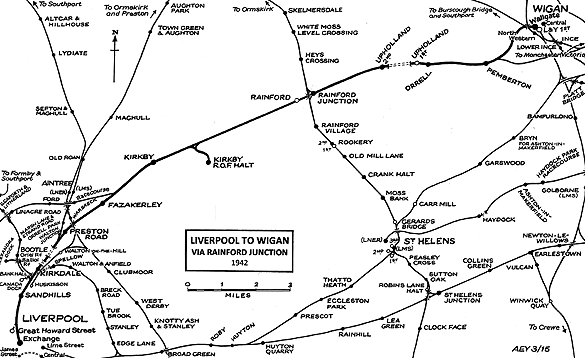

 Home Page
Home Page